People
artnet Asks: Dhaka Art Summit Curator Diana Campbell Betancourt
How has the summit impacted the region?
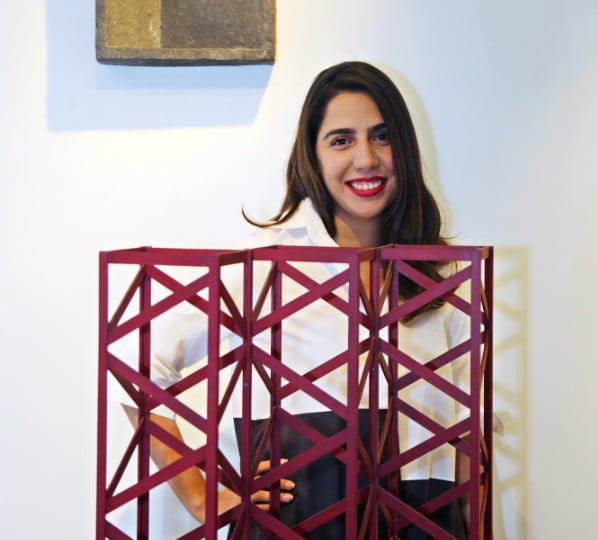
How has the summit impacted the region?

Hili Perlson


Dhaka Art Summit chief curator Diana Campbell Betancourt
Photo: Shumon Ahmed.
Every two years, Bangladesh becomes host to scholars, artists, and art-world professionals traveling to the four-day Dhaka Art Summit (DAS). Founded by the Samdani Art Foundation, DAS has established itself in the five years since its inception as a pioneering, non-commercial research and exhibition platform for contemporary South Asian art, and indeed, many projects first introduced at the summit have since been exhibited at biennials and institutions around the world.
The summit’s third edition opens this Friday, and will run from February 5-8. With a high-profile program of talks including panelists such as Hans Ulrich Obrist and Kate Fowle, and an award juried by top art-world professionals such as Massimiliano Gioni and Catherine David, this iteration of the DAS cements the status of this biannual gathering as a must on writers’ and curators’ schedules.
artnet News spoke to Samdani Art Foundation’s artistic director and DAS chief curator Diana Campbell Betancourt, who has been curating the summit since its second edition, and is already commissioning projects for 2018.
The summit has a very rich program, from solo projects which you also curate, to a performance and film program, workshops, talks, and a critical writing ensemble to name some highlights. What considerations go into putting it together? Who is the audience?
Curating this program was an exciting challenge, as it truly needs to speak to both local, regional, and international audiences. We need to be in dialogue with the art world’s international and regional audience as well as the thousands of local visitors, which includes many children and school groups. At the same time that DAS is a research platform and a hub for thought leaders, artists, curators, art and academic institutions it is also an arts festival for the local community with a strong educational aspect.
The other consideration that goes into the Summit is that this is not a platform to highlight the Samdani Art Foundation collection. We have initiated partnerships with the Bangladesh Ministry of Culture, the Bangladesh National Museum, and the Bangladesh Shilpakala Academy to exhibit works that were previously in storage, and we are also working with some of the best private collections and artists’ estates in the region to exhibit works that might not otherwise be publicly accessible. DAS facilitates meetings that might not be possible elsewhere in the world; we exist to open up access.
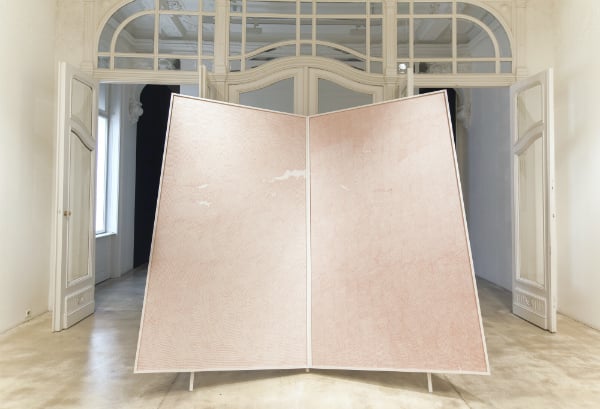
Waqas Khan, The text in continuum (2015)
Photo: Courtesy of the artist and Galerie Krinzinger, Vienna
The solo projects, which include many newly-commissioned works, span a very wide range of artistic practices. With the overarching theme very loosely summed up as “becoming individual,” what was the focus of your curation? And does becoming an individual mean different things in different parts of the world?
In the times we are in, who you are, or rather who the state recognizes you to be, will determine what borders you can enter. The identity that we choose and that which can be imposed on us may not necessarily be in synch. Becoming an individual is a unique experience—and identity is not static. The show looks at various factors that shape a person in the journey from womb to tomb.
The solo projects are meant to be poignant insights into recent and commissioned works by artists connected to the region. I wanted to go out of my way to include artists who are difficult to “box” into a category—be it in regards to where they are from (Simryn Gill is a great example of that), or what medium they work with (Dayanita Singh, Shumon Ahmed, Shakuntala Kulkarni)—rather than presenting highlights of “superstars” from India, Pakistan, Bangladesh, and the rest of South Asia.
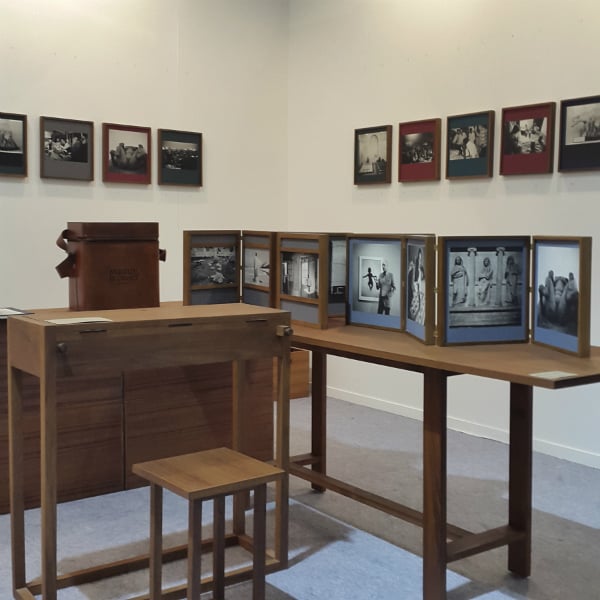
Dayanita Singh, Museum of Chance
Photo: courtesy of the Artist
“Mining Warm Data” is another part of the program curated by you, together with Ruxmini Choudhury and Shabnam Lilani. Does this exhibition take a more direct, political stance? What does the term “Warm Data” mean?
“Mining Warm Data” is an evocative group exhibition, and yes, this show takes a direct political stance, which was a challenge I wanted to take on for this summit in the current political climate of South Asia. The term is coined by [artist, writer, and filmmaker] Mariam Ghani, who writes:
[…] Warm data is easiest to define in opposition to what it is not: warm data is the opposite of cold, hard facts. Warm data is subjective; it cannot be proved or disproved, and it can never be held against you in a court of law. […] However, warm data can only be collected voluntarily, not by force. […] A warm database is distinguished from a corporate or government database not primarily by its interface or its underlying structure, but by the way its data is collected.
Chitra Ganesh and Mariam Ghani’s ongoing project Index of the Disappeared is a physical archive of post-9/11 disappearances using a “warm database”—and a new chapter has been commissioned and realized for this show by Samdani Art Foundation, Yale University Law School’s Schell Center for Human Rights, and Creative Time Reports, and it also incorporates Bangla text.

Tenzing Rigdol, Monologue #2
Photo: courtesy the artist
Warm bodies, cold bodies, and metamorphic bodies transitioning between these states challenge the viewer in this exhibition, which seeks to give agency to the spectator’s imagination rather than reduce the artworks to their often disturbing political implications. Some of the imagery in the show is viscerally disturbing. However, the works have not been selected for their shock value; they raise the emotional temperature in the space to enable us to feel the pulse of warm data, rather than the cold encounter of slickly packaged statistics.
What other points in the program are highlights for you?
Tate Modern curator Nada Raza has created an intergalactic, intergenerational exhibition that brings together artworks from Pakistan, India, Bangladesh, and Sri Lanka. Its point of departure is “The Missing One,” a book thought to be one of the first science-fiction stories in the Bengali language, which was published in 1896 by J. C. Bose. Nada has curated works using the tropes and technologies of science fiction as a thematic beginning and it’s a wonderful exploration.
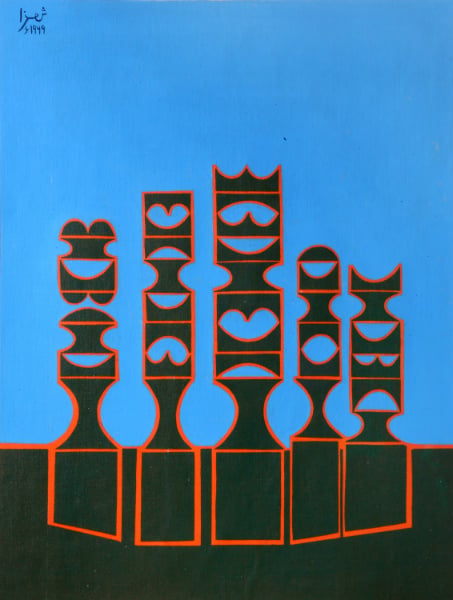
Anwar Jalal Shemza, Chessmen, (1969)
Photo: Collection of the Estate of Anwar Jalal Shemza
It’s also the first edition in which DAS will have an historical section, Rewind, which I curated with a team including Beth Citron (Rubin Museum), Sabih Ahmed (Asia Art Archive) and Amara Antilla (Guggenheim). Rewind highlights the practices of South Asian artists active before 1980, and what’s really exciting is that several of these works, which have been loaned by public and private collections in Europe, Asia, and the United States, will be shown publicly at the Summit for the first time in decades—and in some cases, even for the first time. Amara has done an incredible job transforming the space with her exhibition design and I think it will be one of the biggest highlights of the summit.
The film program will be also very exciting. It was curated by Shanay Jhaveri, assistant curator of modern and contemporary art South Asia at the Metropolitan Museum of Art and will explore colonial and postcolonial conditions—such as belonging, exile, difference, and displacement. It will show the work of over 35 international filmmakers and artists including screenings by Kader Attia, Anna Bella Geiger, Lamia Joreige, Mani Kaul, Bahman Kiarostami, Lisl Ponger, Taiki Sakpisit, Jennifer Reeves, and many more.
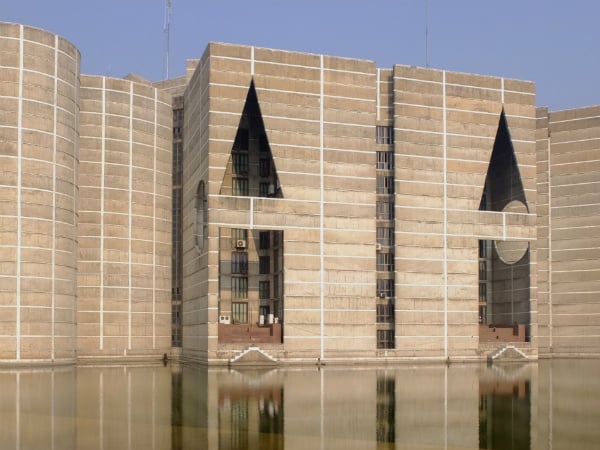
Another highlight is “Architecture in Bangladesh,” a journey through Bangladeshi architecture from 1947-2017 curated by Centre Pompidou curator Aurelién Lemonier.
Photo: Dhaka Parliament by Louis Kahn
I’m also looking forward to a new initiative this year, our Critical Writing Ensemble. It’s curated by Katya García-Antón, director and curator of the Office of Contemporary Art Norway, and the participants in the talks and sessions range from art historians, professors, curators, and museum directors from South Asia and beyond. We are looking at Critical Writing as a creative act, equal to the visual arts, and this is very unique and a grand experiment.
The talk program includes a panel with high-profile international guests on the theme of “Navigating the Uneven Terrain of Regional Group Shows.” What are the issues you hope will be addressed in this panel?
We have over 70 institutions coming to the summit for research. I get emails daily regarding plans of group shows pertaining to different South Asian countries. This kind of movement happened with Indian artists already (Chinese and other regions as well) and I think it is important to discuss ways to improve thinking about these kinds of shows learning from exhibition histories and some leading thinkers in the field, as well as from artists. 2017 is a year of “Reimagining India” in the UK–how do you imagine India without looking at the wider region? I also think it is important to have this discussion in the region, in a regional platform.
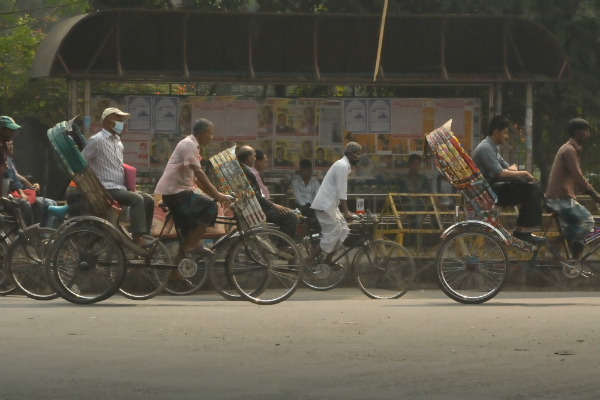
Po Po VIP Project (Dhaka) (2015)
Photo: Courtesy of the artist and the Samdani Art Foundation
Commissioned and produced by the Samdani Art Foundation for the Dhaka Art Summit, 2016
This is the third edition of the Dhaka Art Summit, and you’ve worked as artistic director on two of these the three. How would you describe the impact that the summit has had on the region in the five years since its inception?
The Samdani Foundation is committed to increasing artistic engagement between Bangladesh and the rest of the world and the summit has made this goal a reality.
We are very excited that curators and museums from all over the world are becoming more and more interested in Bangladesh since the inception of the DAS. The summit has established itself as leading research platform for global Institutions and we are thrilled with the over 70 outstanding institutions that are visiting or partnering with the summit this year, including the Metropolitan Museum of Art, the New Museum, and the Museum of Modern Art in New York; the Centre Pompidou in Paris; the Queensland Art Gallery of Modern Art in Brisbane; Artspace Sydney Visual Arts Centre; documenta 14 in Athens and Kassel; Art Gallery of New South Wales; Stedelijk Museum Amsterdam; Barcelona Museum of Contemporary Art; M+ in Hong Kong; CSMVS Museum in Mumbai; Fukuoka Asian Art Museum, Japan; Tate Modern, Tate Britain, V&A, New Art Exchange, and Serpentine Galleries from the UK; Garage Museum of Contemporary Art in Moscow, and many others.
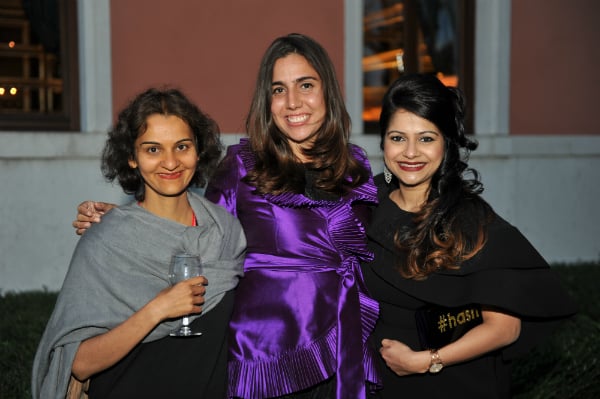
Maryam Jafri, Diana Betancourt, Nadia Samdani in Venice, 2015
Photo: Samdani Foundation
These institutions would not be interested in visiting the summit were it not for the talent and incredible works by the artists taking part in it. It is a pleasure working with artists across 2+ years (I am already working on the 2018 commissions) to help them realize ambitious works that might not otherwise show in Bangladesh, a country without a contemporary art museum.
The most important impact, however, is on the local community outside of the art world. Every edition, we’ve tried very hard to make the summit as inclusive as possible with a real focus on a wonderful and engaging educational program. In fact, most children in Dhaka have the opportunity to attend the summit and participate in activities or simply see the exhibitions. The summit has always been free to all and it will remain this way—and since it has really registered locally, we expect over 130,000 visitors this edition.
The Dhaka Art Summit takes place from February 5-8, 2016.